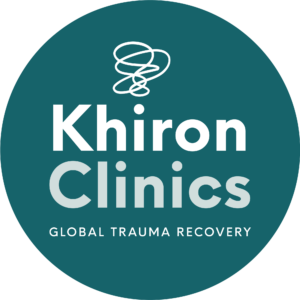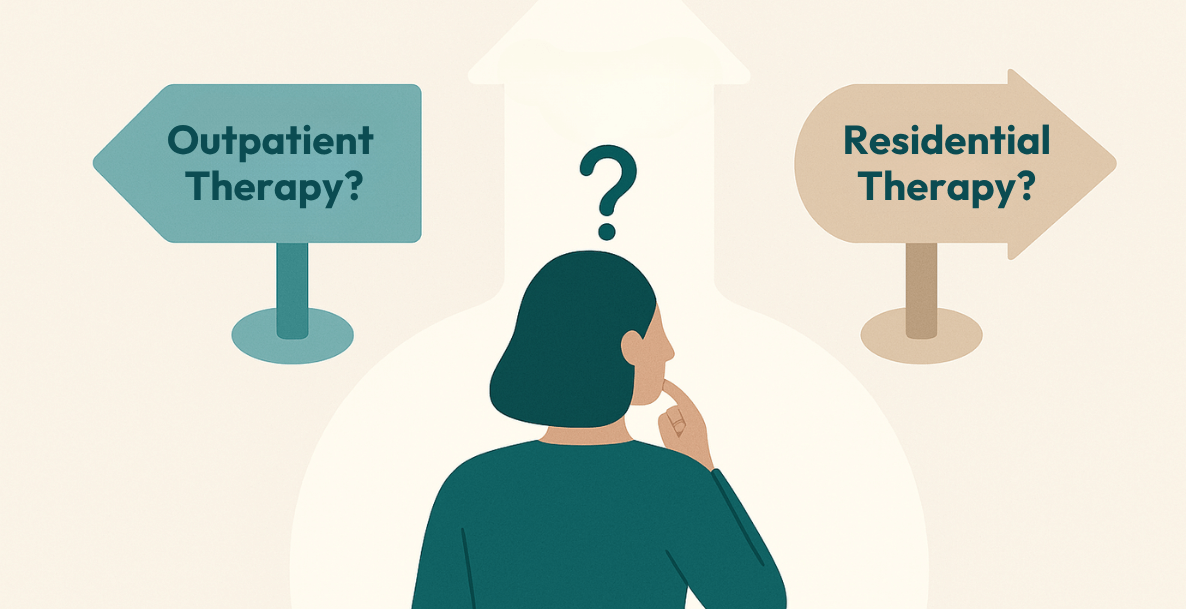From the outside, it can be hard for those of us in relatively conventional relationships to understand why someone stays with an abusive partner, family member or boss, when placed in the same situation; we would turn on our heels and run as far as possible in the other direction. The simple answer is that far from being simple, it is an extremely complex and multifactorial issue that spans past experience in both the abused and the abuser. Mental health issues that arise from that experience and a whole cocktail trolley of hormones that get served up in different scenarios and serve to feed the co-dependency of harmful and unequal bonds keeps people stuck when they should in fact, twist.
One of the best-known examples of unhealthy bonding occurred in Sweden in 1973 and was coined “Stockholm Syndrome” (Bejerot 1974). Despite surviving the trauma of having dynamite strapped to their bodies and being held hostage for 131 hours during the course of a bank robbery, the hostages defended their captors (one even mounting a legal defence on their behalf) and one later becoming engaged to one of them. Stockholm Syndrome is described as “an unconscious emotional response to the terror of being captive” and that “protection is entirely in the hands of the abuser”, placing them in complete control. [1] This is an extreme example of what is often referred to as a Trauma Bond but this type of attachment challenges reason and is also extremely hard to detach from.
Unhealthy bonds can occur in a variety of settings, sometimes even intentionally such as in the case of military training but are most often seen in everyday life in the example of children of abusive parents or in intimate or workplace relationships (basically anywhere there is the opportunity to abuse a position of authority and exercise control). [2]The relationship is characterised by an unshakeable attachment built on the foundations of recurrent physical, emotional or psychological abuse, peppered by sporadic positive reinforcement, affection and all too rare good times. The cycle is an unhealthy merry-go-round of trauma, often predicted by unresolved childhood trauma. According to trauma authority, Dr Bessel van der Kolk, “The absence of strong, healthy early attachments robs people of the security necessary to interrupt the inner or social isolation that keeps them stuck in repetitive patterns.” This response is not because they are weak but because the early trauma creates psychological and biological disturbances which include “physical addiction to abusers; hyperarousal states that are alleviated by violence against self or others”. [3] The intensity of the connection is reinforced by the fact that it is physical as well as emotional and psychological, with the sufferer awash with hormones that dictate their response to the abuser in a similar way to that of substance users.
How Life Creates the Perfect Storm & the Making of an Equally Perfect “Hostage” Candidate
Unresolved past trauma, especially in childhood, can compromise our capacity for developing and maintaining positive relationships (family, romantic, friendship and work) and from engaging in appropriate social exchange. Trauma for a child means an event or events that outweigh its ability to cope, which often leads to mental health issues like anxiety and depression, avoidant or addictive behaviours, mercurial moods and emotions or even Borderline Personality Disorder or Narcissistic Personality Disorder. Traumatic episodes have a tendency to shift people into survival mode, which is either to fight, flee or freeze and in the case of trauma and unhealthy bonds, it’s almost always the freeze option.
Because of this childhood abuse (eg domestic or sexual), the person often has no real sense of “self” and may have been prevented from developing a good support system by way of friends, extended family etc. This inhibits resilience and fosters a poor coping style. Other indicators which place trauma sufferers at risk of continuing to be abused in subsequent relationships are:
- Learning difficulties / poor academic performance
- Substance abuse
- Poverty / debt / Unemployment
- Low self-esteem
- Exposure to the trauma of others
- Negative or positive reaction of others to their trauma (can make them feel deserving of bad treatment or the sympathy can furnish them with good feelings)
Why Doesn’t (S)he Just Leave? – The Chemical Equation of Unhealthy Attachment
The body’s reaction to stress causes activity in the parts of the brain that activate what is referred to as “motivated behaviours” (those which are directed toward or away from particular stimuli such as hunger or sex) which require activity and effort. The reptilian brain which includes the sympathetic and limbic systems which are involved in self-preservation – eating, fighting, fleeing and reproducing – takes over when we are stressed, shutting down the parts of our brains that help us to make good decisions and plan for the future. This is because the brain has just one aim at this point, to help us survive and this is where it gets really interesting. In the situation of unhealthy attachments, the brain associates the abusive person with safety, even if it is they who are the cause of the trauma because it is also the abuser who is intermittently providing comfort and sporadically repenting. The brain latches onto this and processes it as positive reinforcement and because the prefrontal cortex has taken a back seat to the sympathetic part of the brain, it is not able to think about the long-term consequences of being in the situation. The body is at the same time in a state of high alert because of the amount of cortisol being released, which when not “discharged” can create feelings of exhaustion, dissociation and lead to a PTSD-like state. [4]
To exacerbate things, the chemicals in the brain cease to be effectively modulated in abusive relationships, with the brain becoming addicted to the feel good hormones (dopamine and oxytocin) associated with the “loving” behaviour which is at times shown by the abuser. If we liken it to dieting, it feels like eating a box of chocolates after surviving on cabbage soup for a month; so good that it makes up for the cabbage so we just want more. We associate the chocolaty good vibes with the person who gave it to us, even if it’s the same person that keeps force-feeding us the watery, unpalatable soup. Psychologists and law enforcers both describe the common occurrence of abused and beaten women who refuse to press charges or defend their partners at the point of rescue by police or other interveners as logic having left them. They instead feel an inappropriate range of feelings, from a need to protect them to even feeling a misplaced sense of gratitude (victims have often been “groomed” and “rescued” from homelessness or other unsatisfactory situations) and that they need them because they have suffered in their own lives or wanting to please the abuser by placating them so in effect, facilitating the abuse.
The Abuser Profile
There is a strong correlation or comorbidity between Narcissistic Personality Disorder, Psychopathy and people who tend to be the abuser in these types of intense and co-dependent relationships where the power-balance is skewed toward the exploitative party. As is often the case, no matter how the disorder presents itself in the abuser, the subject is adept at ingratiating themselves with the object of their imprisonment and getting them to sympathise with them by regaling them with tales of their hard-done by history including childhood abuse. They also use it as grounds when pleading for forgiveness and promising that it will never happen again etc. etc. Conversely, the abuser (or captor) shows their captive no such empathy (as they’re not actually capable of feeling it) and instead seeks to isolate and devalue them in order to remove them from any existing support networks, if there are any which allows them to exercise complete control. It is the ultimate example of manipulation and these people are arch manipulators; at the same time, the good and bad guy. In the extreme, they can even employ torture and sensory deprivation.
Breaking Free
Many factors, apart from those listed, can impact the ability for the abused party to break free. These can include financial dependence, usually carefully constructed by the abuser as a means to make leaving difficult if not seemingly impossible and the presence of children, which ties into the financial component, as there is no means for the abused party to support them. Advice from van der Kolk is that “in contrast with victimized children, adults can learn to protect themselves and make conscious choices about not engaging in relationships or behaviours that are harmful”. They can be assisted via the following safeguarding measures which can build resilience:
- Learning positive behaviours, coping and problem solving skills
- Being in employment which can provide independent means
- Being part of a community such as a special interest, support, church or school group
- Continuing education
- Having a support system in place (friends and/or family)
If you are concerned that someone is entering into an unhealthy relationship, some signs to look out for are the break-neck speed at which the relationship is moving whilst they are simultaneously losing contact with friends and family and becoming all-consumed by their new relationship. Tell them that you’re concerned about this pace and let them know that you are there for them should they need you. You cannot be responsible for another person but reminding them that they are not alone may be helpful at such time as they realise they are in trouble. If things have progressed too far, sometimes it can be necessary to physically remove the person from the situation to help their body reset so they can wake up to the dysfunction of their situation but this comes with its own challenges and moral issues. If it is possible, they say that a change is as good as a holiday and this could be the best holiday they ever have.
If you have a client, or know of someone who is struggling to heal from psychological trauma, reach out to us at Khiron Clinics. We believe that we can improve therapeutic outcomes and avoid misdiagnosis by providing an effective residential program and out-patient therapies addressing underlying psychological trauma. Allow us to help you find the path to realistic, long-lasting recovery. For information, call us today. UK: 020 3811 2575 (24 hours). USA: (866) 801 6184 (24 hours).
Sources:
[1] Logan, Matthew H. “Stockholm Syndrome: Held Hostage By The One You Love”. Violence And Gender, vol 5, no. 2, 2018, pp. 67-69. Mary Ann Liebert Inc, doi:10.1089/vio.2017.0076. Accessed 12 July 2021.
[2] Williams, Jason et al. “Unit Cohesion, Resilience, And Mental Health Of Soldiers In Basic Combat Training”. Military Psychology, vol 28, no. 4, 2016, pp. 241-250. Informa UK Limited, doi:10.1037/mil0000120. Accessed 13 July 2021.
[3] van der Kolk, Bessel A. “The Compulsion To Repeat The Trauma”. Psychiatric Clinics Of North America, vol 12, no. 2, 1989, pp. 389-411. Elsevier BV, doi:10.1016/s0193-953x(18)30439-8. Accessed 12 July 2021.
[4] Stovall-McClough, K. Chase, and Marylene Cloitre. “Unresolved Attachment, PTSD, And Dissociation In Women With Childhood Abuse Histories.”. Journal Of Consulting And Clinical Psychology, vol 74, no. 2, 2006, pp. 219-228. American Psychological Association (APA), doi:10.1037/0022-006x.74.2.219. Accessed 13 July 2021.






